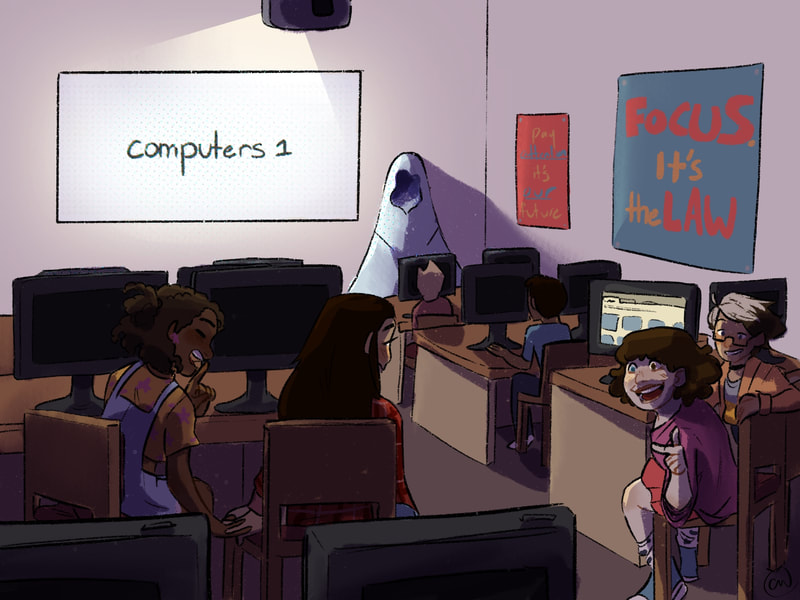|
By Aaron Zhang As a biracial person, Chase Sterling (ze/hir) wants to use hir art to talk about hir identity. But noting hir privilege due to hir light skin, “I’m not sure if I should tell these stories,” ze said. “I think that’s the biggest barrier—my mind.” Sterling started drawing in fourth grade, designing manga-like characters; ze describes hir work as “a simplified comic book style.” Starting from a character concept and building into a story, Sterling usually draws short comics for fun but noted that ze wants to publish a book before ze turns 20. Many of Sterling’s original characters do not reflect hir current understanding of the world; they are mostly white. Ze believes this lack of representation was a byproduct of childhood TV shows. While watching hir little sisters’ favorite TV programs, Sterling realized that many shows had an entirely white cast with a black side character that shows up for a few episodes. Young, impressionable viewers could easily internalize the belief that white characters were the default. Sterling noticed this theme repeated in hir own artwork and realized that ze needed to address the issue. Now, Sterling’s art explores hir biracial identity through the themes of duality and discovery, as well as the diversity of hir characters. “Since fourth grade, I have had a better understanding of my racial identity.” ze said. “I try to infuse more of myself” into comics. By incorporating hir identity into hir characters rather than re-hashing and contributing to the problematic character stereotypes on TV, Sterling is developing unique stories. Ze has noticed the same whitewashing habits forming in young artists. Kids like hir see white characters and white audiences, and they tend to draw white characters for white audiences—while the artwork is unique, the characters themselves “fit into a box,” ze said. So for Sterling, racial equity starts with educating kids. As hir own experiences with childhood television programs show, representation is inherited and internalized—children are “going into a world that they don’t fully understand because we refuse to teach them proper history and show them people.” Sterling specifies that kids need to be taught about activists doing work right now, because that is the change they are immediately inheriting. New artists, artists of color, artists influencing the art community—those people can teach younger generations racial equity The education doesn’t stop after elementary school. Even today, Sterling is still learning about hir identity. Specifically, ze is understanding what hir biraciality means to hir. The #OwnVoices movement, which focuses on telling stories of marginalized peoples by people of that group, is important to hir. So should ze, a light-skinned biracial teen, create narratives centered around darker-skinned characters? “I want to be a good ally,” Sterling said. Yet ze doesn’t have all the answers. “I am still learning.” Sterling believes that everyone has a story to tell. Yet the heterogeneity of art comes from the way in which the same artists tell the same story: love, death, joy, life, the human experience. Sterling believes that diverse artists—such as hirself—can shape those old stories in new ways. “We need diverse art because that’s what inspires people,” ze said. So for teens of color making art, Sterling has advice: “Do whatever you want. Because the world is crazy, and not everyone’s going to appreciate your art, but keep making it anyway.” It is unique, it is beautiful, and it is yours; “it’s important that you make it for yourself and for people who actually appreciate it,” ze said. And for educators, institutions, and people in general: “Support kids. Support little artists. Because they will be professional artists someday.” All images by Chase Sterling.
1 Comment
Clover Borne
9/15/2021 07:21:41 am
I love this sm <33 Chase deserves to be recognized for hir work and I love that this article exists. I hope ze continues to learn and educate others through art 🥺
Reply
Your comment will be posted after it is approved.
Leave a Reply. |
Archives
February 2023
Categories
All
|


 RSS Feed
RSS Feed